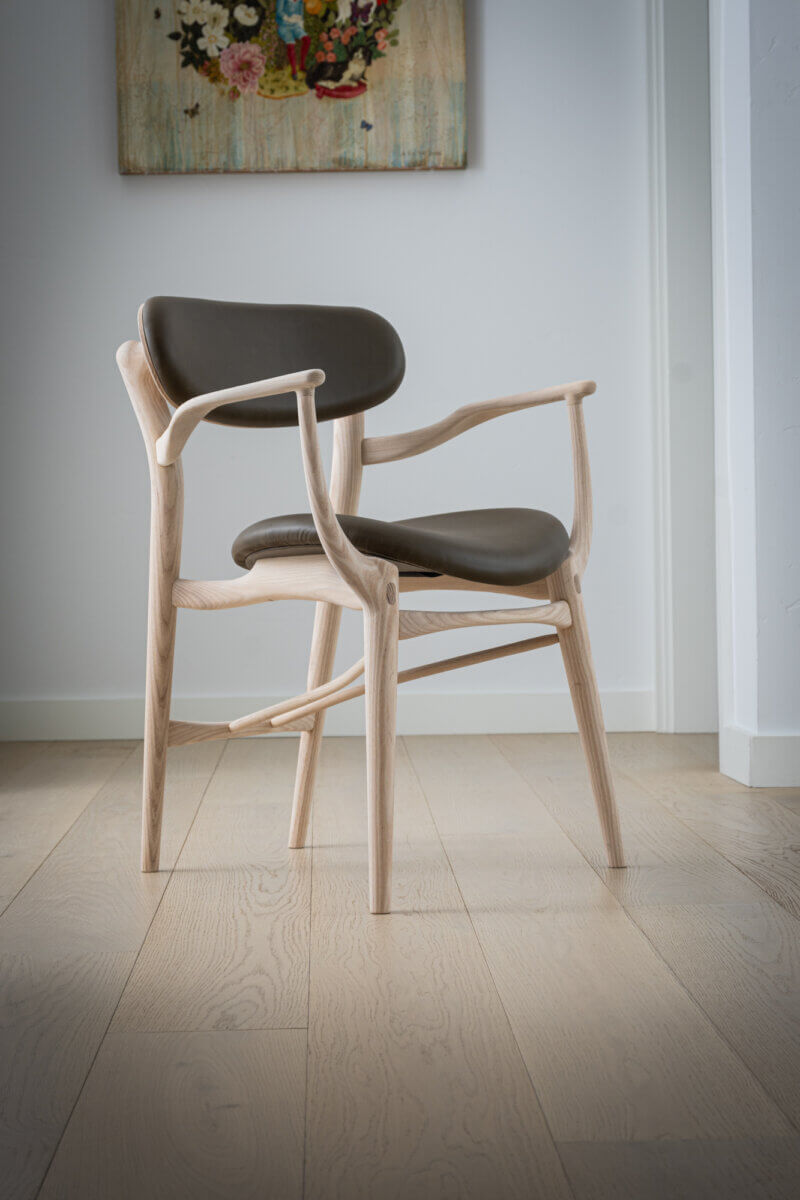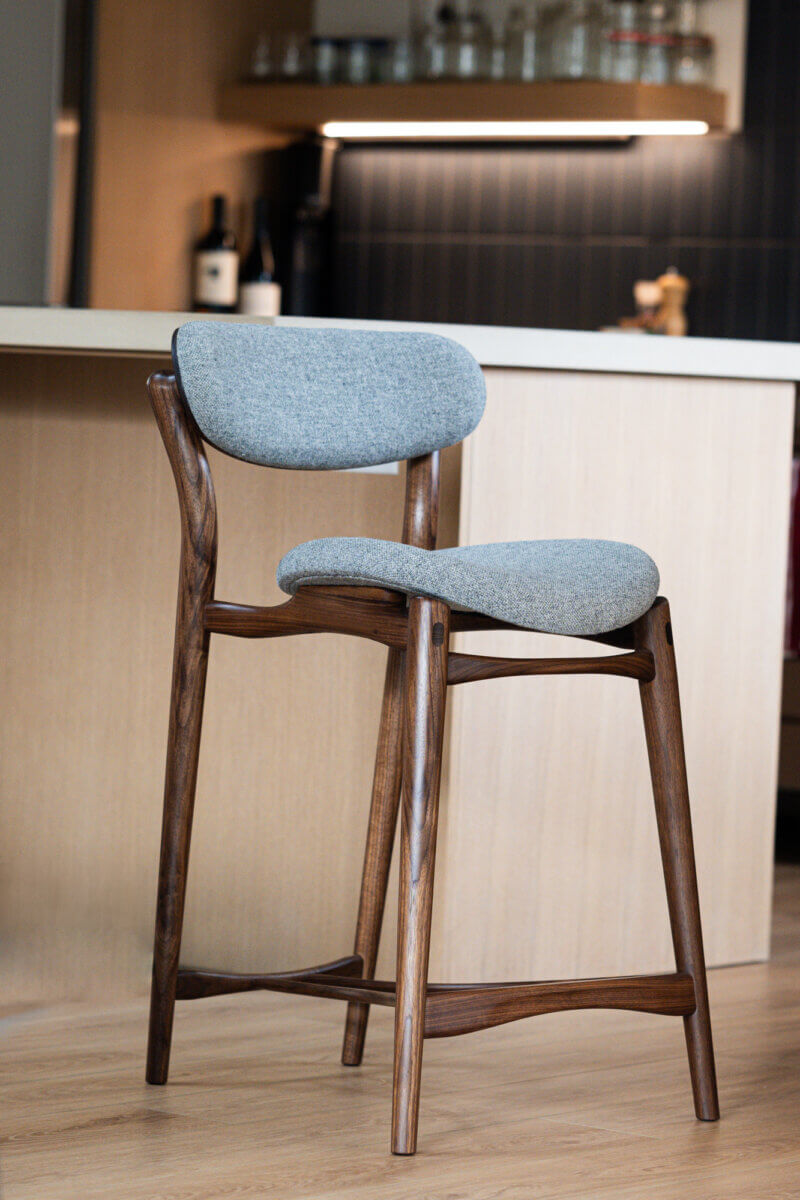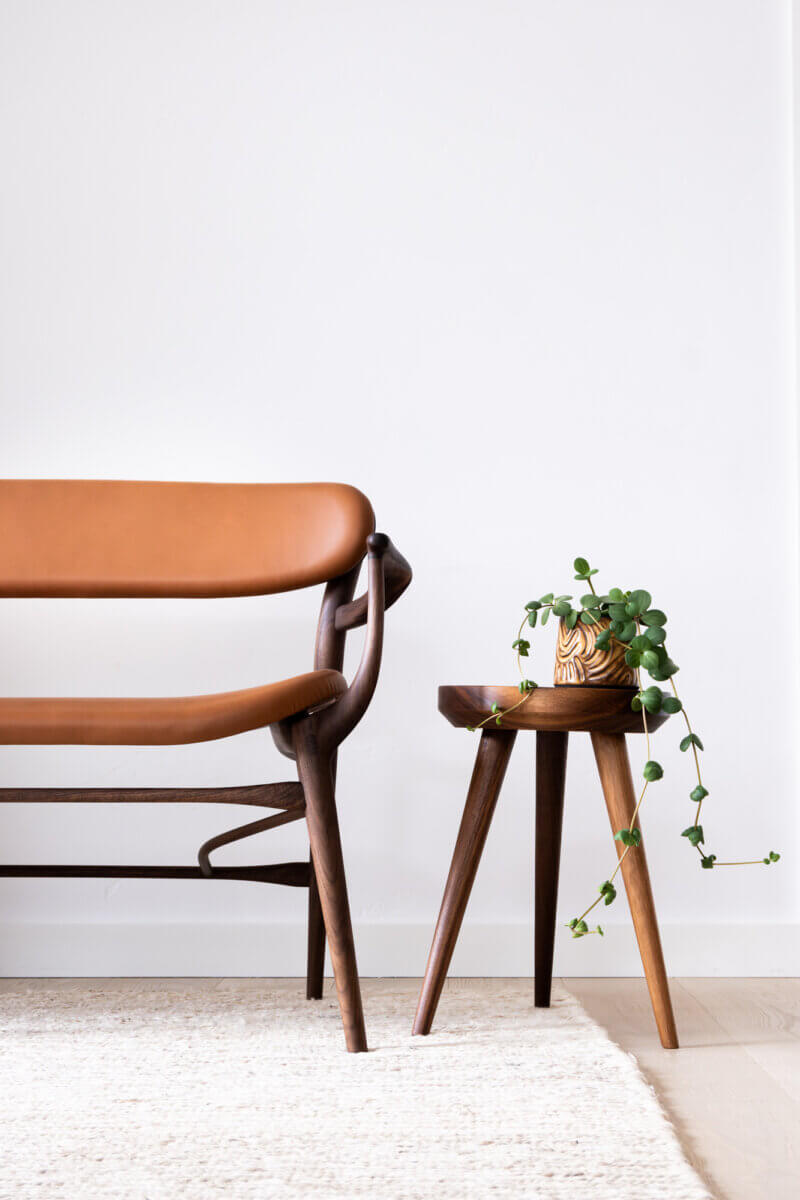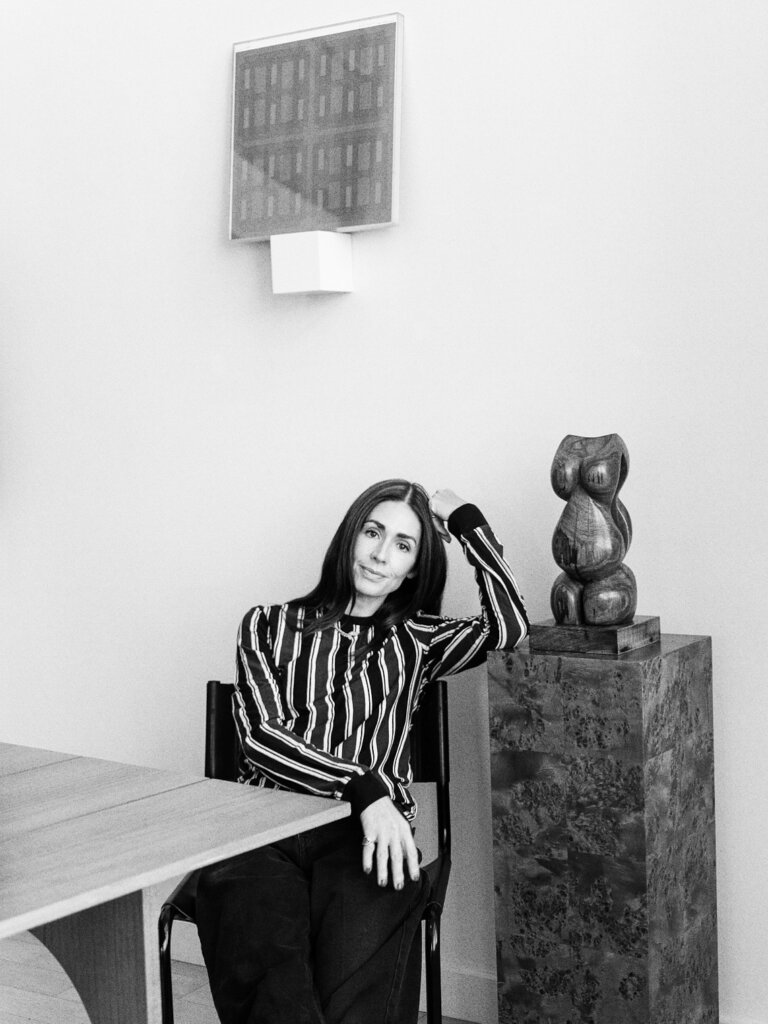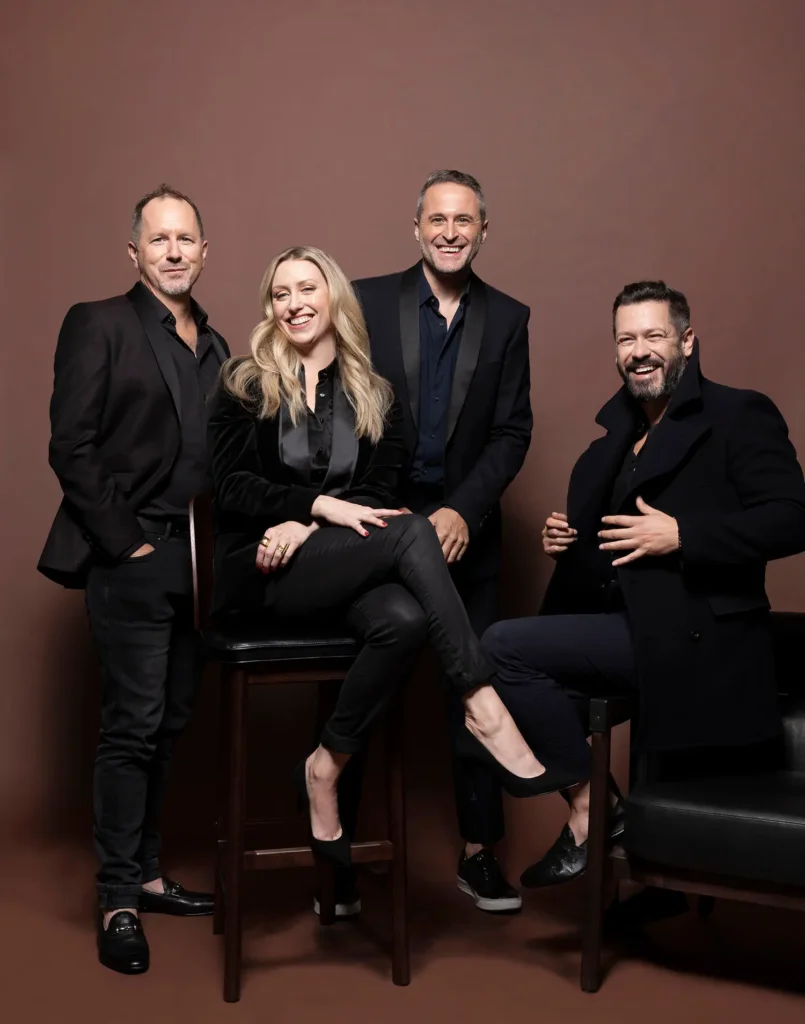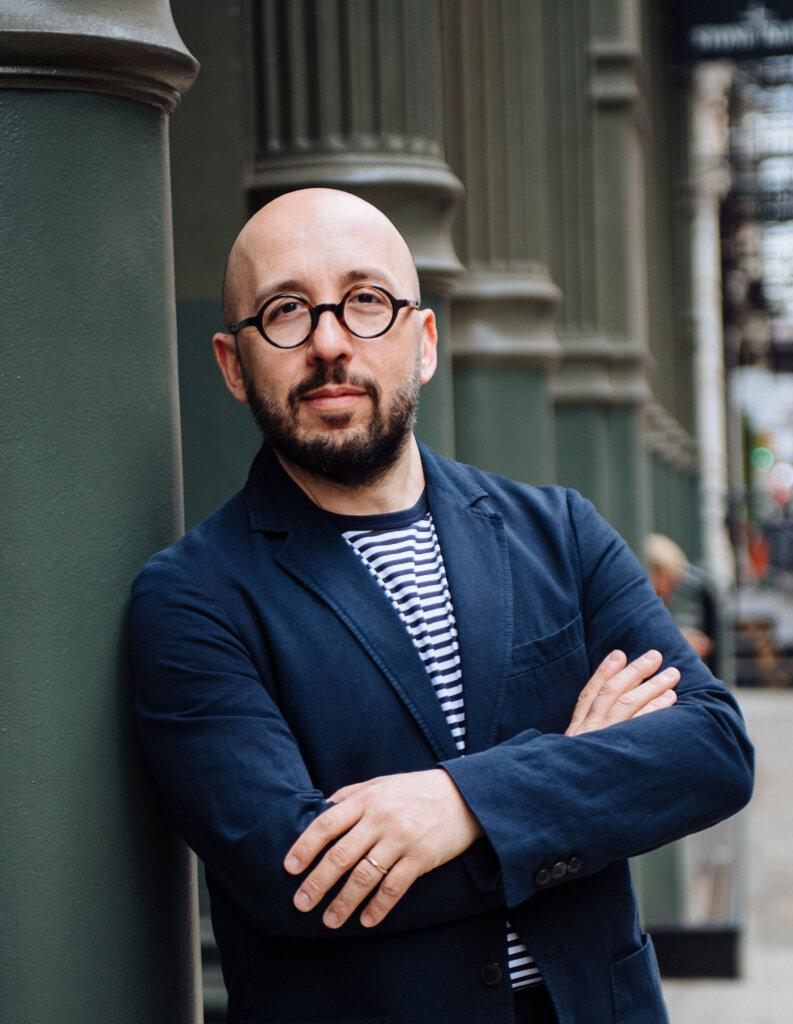
Justin founded Fernweh Woodworking in 2015 in Bend, OR. Taking a leap into the unknown, he discovered a deep passion for design through woodworking, eventually specializing in furniture. In 2017, he developed the Sling Chair and Tripod Table, which paved the way for his full line of small-batch handcrafted furniture, culminating in the Oxbend Collection in 2020. Justin draws inspiration from Sam Maloof’s passion and work ethic, Hans Wegner’s practicality, and Finn Juhl’s impeccable curves. After studying business at Purdue University, he served in the Marine Corps, deploying with an Afghan Police advisory team. Later, he moved to Oregon to join a wildland fire Hotshot crew, launching Fernweh Woodworking during the fire off-season.
When you were a kid, what did you dream of becoming? Did any of those childhood ambitions lead you to where you are today?
Justin Nelson: I spent a lot of time taking remote controlled cars apart, and utilizing the parts for alternate projects, mostly completely home-made remote controlled boats which included single shot spit-wad cannons. Although all that creativity was mostly engineering and electronics focused, I also spent a lot of time trying to make those contraptions beautiful; I remember being obsessed with the curves on 90’s sports cars and vintage airplanes, like the P51 Mustang.
Is there a particular craft tradition, designer, or material that deeply inspires you? How has it influenced your approach to furniture design?
JN: I admire designers who focus on negative space—those who strip away everything except what is useful and essential. That ethos resonates deeply with me.
How would you describe your design philosophy? Has it evolved over time, and if so, how?
JN: I want our pieces to have an ethos behind them. That ethos, sometimes, is different for different collections; but there’s always a driving meaning and purpose behind a collection. Earlier on, I was focused on sculpture; I took joy in the difficulty of making something extremely sculptural. Later on I developed a love of creating efficient duplication processes including repeatable use of jigs and fixtures, and systems of storing knowledge and skills with a focus on efficient and consistent batch production.
Is there a particular film, book, or piece of music that has influenced your creativity or approach to furniture design?
JN: Hans Wegner: Just One Good Chair, Sam Maloof: Woodworker, The Wood Handbook by the USDA.
Tell us about your workshop or studio. How does your environment influence your creative process and craftsmanship?
JN: Our studio is located on a small ranch in Central Oregon with a stunning mountain view. We have a few cows on our beautiful five-acre property. The workshop is a full 360° fabrication and design studio, meaning we handle everything in-house—from design and renderings to CNC machining, woodworking, finishing, and upholstery. Our team of skilled woodworkers crafts our furniture in small batches using traditional craftsmanship blended with modern technology.
We constantly push the boundaries of our materials and explore new techniques. Our Fjoon Collection, for instance, incorporates all three major methods of bending wood: steam bending, vacuum lamination, and hand-shaping. We’re also launching the Oxbend Windsor Chair at Wanted—our first piece incorporating green wood and steam-bending the crest rail.
Sustainability is a top priority. We strive for carbon neutrality by repurposing wood scraps for our stove and using sawdust on our fields. We also patented a plug system for the Fjoon Collection, allowing for easy re-upholstery, ensuring longevity and reducing waste. Every piece we create is made with the future in mind.
Which piece or project are you most proud of, and what makes it special to you?
JN: My favorite piece is always the newest one we’re working on because there’s so much to learn with each project. Right now, I’m especially excited about our Oxbend Windsor Chair. It’s our first serious venture into steam bending and working with green wood rather than kiln-dried wood. Watching green wood rebel against the intensity of steam bending—then finally conform and stabilize after proper drying—is incredibly rewarding. The entire process is awe-inspiring.
What do you see as the biggest challenge in furniture making today—whether in design, production, or sustainability? How should the industry respond?
JN: Production is the biggest challenge, particularly finding skilled chairmakers in today’s economy. This issue ties into a broader problem—the dominance of cheap, disposable furniture in the market. Customers often expect handcrafted hardwood furniture to be priced like mass-produced alternatives, but we are committed to maintaining high standards. We use skilled labor, unique woodworking techniques, and a blend of traditional craftsmanship with modern technology, all while ensuring our team earns sustainable, livable wages in a supportive environment. Balancing these values with industry pressures is an ongoing challenge.
What are you currently working on? Any exciting pieces in progress?
JN: We’re launching the Oxbend Windsor Chair at Wanted this year. This piece is particularly special because we’re incorporating green wood and steam bending techniques—both firsts for us.
What’s next for you? Any upcoming projects, collaborations, or aspirations you’d like to share?
JN: We’re excited to partner with Sørensen, using their DUET Collection for the upholstery of our Oxbend Windsor Chair. Additionally, we’re honored to be the sole manufacturer of Jomo Tariku’s Nyala Chair and will soon be shipping out the first 10 pieces. Moving forward, we’re eager to collaborate with other designers who can leverage our expertise in both traditional and modern woodworking techniques. As we grow, we look forward to expanding our shop and continuing to refine our craft.
To discover more, visit Fernweh Woodworking and follow on Instagram @fernwehwoodworking.
More from ICFF:
Brand Spotlight: HÅG
ICFF 2025 Preview: Bespoke Salon
A Serious Look at Sustainability in Contemporary Design

